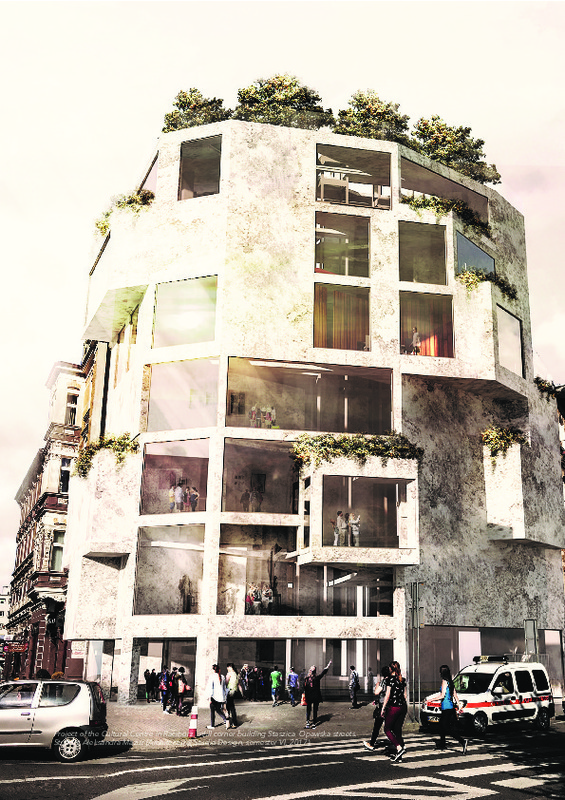JavaScript is disabled for your browser. Some features of this site may not work without it.
Buscar en RiuNet
Listar
Mi cuenta
Estadísticas
Ayuda RiuNet
Admin. UPV
Infill projects and sustainable land use in heritage zones: how to reconcile competing interest sets
Mostrar el registro sencillo del ítem
Ficheros en el ítem
| dc.contributor.author | Stachura, Ewa
|
es_ES |
| dc.date.accessioned | 2019-06-18T12:01:28Z | |
| dc.date.available | 2019-06-18T12:01:28Z | |
| dc.date.issued | 2019-06-18 | |
| dc.identifier.uri | http://hdl.handle.net/10251/122426 | |
| dc.description.abstract | [EN] Sustainability and heritage are inextricably linked. Heritage conservation helps to build and maintain cultural identity and social cohesion of the city community, especially amongst indigenous residents. Heritage zones in European cities and towns over time have suffered destruction and undesirable urban transitions that alter or remove heritage urban fabric. While architecture and urban heritage aims are generally to promote infill development that retains the integrity of the original structure, communities tend to argue for social values that emphasise the retention of vacant land even if it was originally part of the heritage-built form. Hence, the aim of this paper is to identify city residents’ aspirations in relation to such vacant land and spaces. The paper will investigate the case of Raciborz, a medium-sized city in Southern Poland. It will seek to answer the following questions: 1) Are heritage urban composition and principles of its protection antagonistic to the residents’ aspirations? 2) What are the criteria for classifying and valorising vacant land within a heritage city centre? 3) What is the most appropriate way for city administrations to engage with communities to reconcile competing interest sets? What might be possible educational actions addressed to the communities? In the paper the procedure of identifying and evaluating empty sites in the heritage city centre will be presented as well as the results of survey presenting residents’ ideas of optimal way of use of empty city spaces. | es_ES |
| dc.language | Inglés | es_ES |
| dc.publisher | Universitat Politècnica de València | |
| dc.relation.ispartof | VITRUVIO - International Journal of Architectural Technology and Sustainability | |
| dc.rights | Reconocimiento - No comercial (by-nc) | es_ES |
| dc.subject | Infill projects | es_ES |
| dc.subject | Land use | es_ES |
| dc.subject | Heritage zones | es_ES |
| dc.subject | Sustainability | es_ES |
| dc.subject | Raciborz | es_ES |
| dc.title | Infill projects and sustainable land use in heritage zones: how to reconcile competing interest sets | es_ES |
| dc.type | Artículo | es_ES |
| dc.date.updated | 2019-06-18T11:40:39Z | |
| dc.identifier.doi | 10.4995/vitruvio-ijats.2019.11773 | |
| dc.rights.accessRights | Abierto | es_ES |
| dc.description.bibliographicCitation | Stachura, E. (2019). Infill projects and sustainable land use in heritage zones: how to reconcile competing interest sets. VITRUVIO - International Journal of Architectural Technology and Sustainability. 4(1):12-24. https://doi.org/10.4995/vitruvio-ijats.2019.11773 | es_ES |
| dc.description.accrualMethod | SWORD | es_ES |
| dc.relation.publisherversion | https://doi.org/10.4995/vitruvio-ijats.2019.11773 | es_ES |
| dc.description.upvformatpinicio | 12 | es_ES |
| dc.description.upvformatpfin | 24 | es_ES |
| dc.type.version | info:eu-repo/semantics/publishedVersion | es_ES |
| dc.description.volume | 4 | |
| dc.description.issue | 1 | |
| dc.identifier.eissn | 2444-9091 | |
| dc.description.references | Heritage & sustainability. A discussion paper. 2004, Sydney: NSW Heritage Office, http://www.environment.nsw.gov.au/resources/heritagebranch/heritage/research/sustainability.pdf | es_ES |
| dc.description.references | Idem, R. 2010. Socialization of the sustainable architectural design process. Gdańsk: Wydawnictwo Politechniki Gdańskiej. | es_ES |
| dc.description.references | Jabareen, Y. R. 2006. Sustainable Urban Forms Their Typologies, Models, and Concepts. Journal of Planning Education and Research (26):38-52. https://doi.org/10.1177/0739456X05285119 | es_ES |
| dc.description.references | James, P. 2015. Urban Sustainability in Theory and Practice. Circles of Sustainability. London and New York: Routledge, http://www.circlesofsustainability.org/wp-content/uploads/2014/10/Ch-08-Circles-Questionnaire-2015.pdf. | es_ES |
| dc.description.references | Kozłowska, K., Turakiewicz, R. 2004. Początki i rozwój Raciborza. In Początki i rozwój miast Górnego Śląska. Studia Interdyscyplinarne. Origins and development of Upper Silesian Towns. Interdisciplinary Studies. Gliwice: Muzeum w Gliwicach. | es_ES |
| dc.description.references | Piekalski, J. 2004. Wczesne domy mieszczan w Europie Środkowej. Geneza - funkcja - forma. Wrocław: Wydawnictwo Uniwersytetu Wrocławskiego. | es_ES |
| dc.description.references | Newerla, P. 2008. Dzieje Raciborza i jego dzielnic. Racibórz: Wydawnictwo i Agencja Informacyjna WAW Grzegorz Wawoczny. | es_ES |
| dc.description.references | Stachura, E. 2016. Urban and architectural heritage restoration of cities in Poland under contemporary conditions. "City genetic code" as a key to achieve authenticity. In R. Almoeda, S. Lira, C. Pinheiro | es_ES |
| dc.description.references | (ed) Heritage 2016. Proceedings of the 5th International Conference on Heritage and Sustainable Development, Porto, Portugal 12-15 July 2016. Barcelos: Green Lines Institute for Sustainable Development. | es_ES |
| dc.description.references | Stachura, E. 2017. Infill Development and Heritage: The Case of Raciborz Old Town. In R. Almoeda, S. Lira, C. Pinheiro (ed) Rehab 2017. Proceedings of the 3rd International Conference on Preservation, Maintenance and Rehabilitation of Historical Buildings and Structures, Braga, Portugal 14 -16 June 2017. Barcelos: Green Lines Institute for Sustainable Development. | es_ES |
| dc.description.references | Urban resilience. A concept for co-creating cities of the future. 2016 https://www.urban_resilience_conceptnote_2016_nf.pdf. | es_ES |
| dc.description.references | Urban sustainability. Innovative spaces, vulnerabilities and opportunities Garcia Mira R. & Dumitru A. 2014 (ed) La Coruna: Deputacion Provincial de A Coruna. | es_ES |
| dc.description.references | Warszawskie Centra Lokalne, http://sarp.warszawa.pl/wordpress/wp-content/uploads/2015/11/CENTRA-LOKALNE-OW-SARP-2015-wersja-elektroniczna.pdf. | es_ES |
| dc.description.references | Wawoczny, G. 2007. Zabytki powiatu raciborskiego. Racibórz: Wydawnictwo i Agencja Informacyjna WAW Grzegorz Wawoczny. | es_ES |
| dc.description.references | Wołoszyn, M. A. 2013. Ekorewitalizacja, zagadnienia architektoniczne. Poznań-Szczecin: Wydawnictwo Exemplum. | es_ES |
| dc.description.references | Woodcraft, S. & Hackett, T. & Caistor-Arendar, L. & Bacon, N. 2011. Design for social sustainability. A framework for creating thriving new communities. London: The Young Foundation. | es_ES |
| dc.description.references | http://youngfoundation.org/publication/design-for-social-sustainability. | es_ES |
| dc.description.references | Żylski, T. 2018. Architektura obywatelska. Architektura - Murator (3)2018: 26-28. | es_ES |








